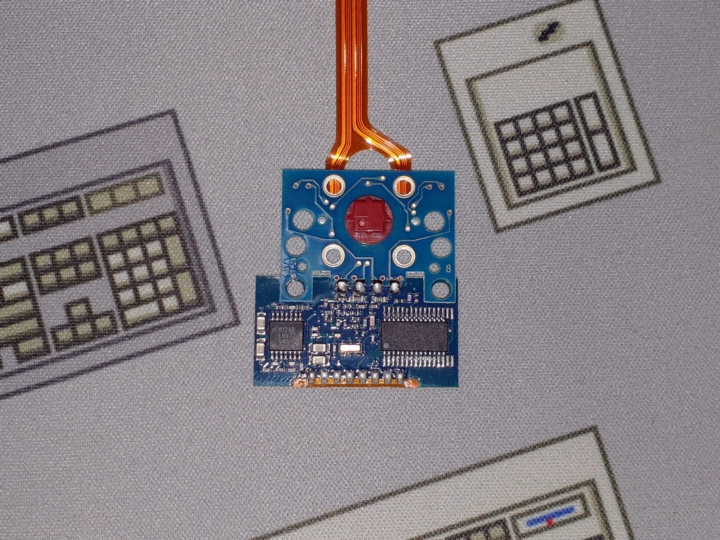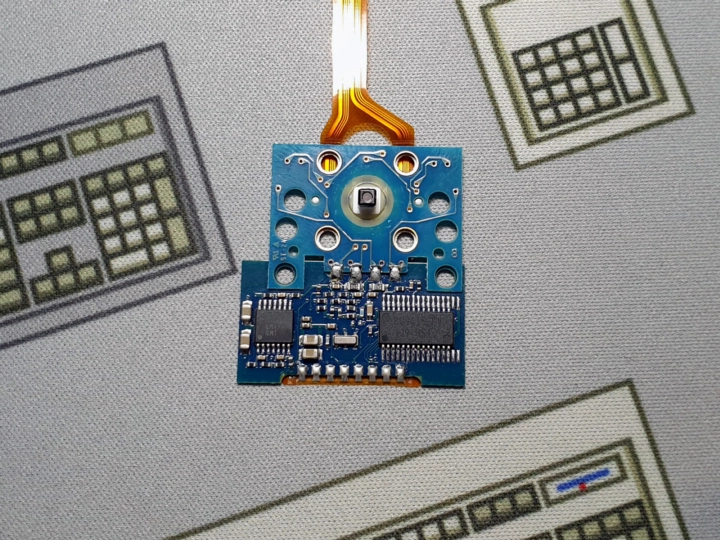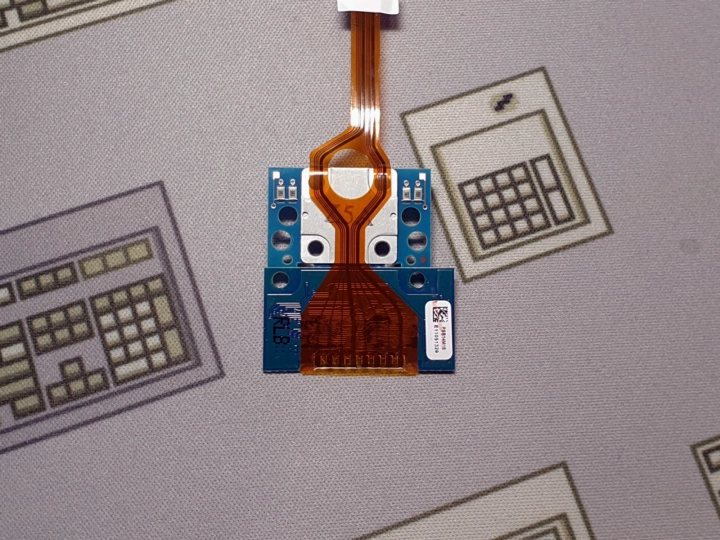IBM/Lenovo TrackPoint pointing stick
- Updated
Contents
Background

TrackPoint is the market name for four pointing device technologies developed and employed by IBM and now used by Lenovo, and one additional technology developed and employed by Lenovo. The latter three designed by IBM known as TrackPoints II, III and IV are isometric pointing sticks famously used on IBM and Lenovo ThinkPad portable computers and several notable discrete keyboards. Emanating from in between the G, H and B keys, the technology uses strain gauges to measure user input without needing the device to move around like a joystick.
Design
The TrackPoint as we now know it first appeared in November 1990 in patent US5521596A, in which a sensor device placed underneath a keycap or in between two keys could allow a keyboard to carry out analogue cursor movement. The former would later be developed by other companies into the "J-mouse", but the latter design when paired with strain gauge sensors as the patent suggests would comprise the basic makeup for TrackPoints II through IV[%US5521596A%].
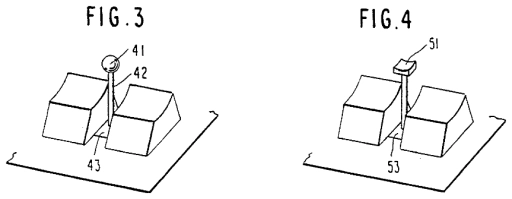
This 'classic' TrackPoint design was enhanced by 1994's US5570111A, which added a negative inertia transfer function into the TrackPoint's firmware that counteracts the general feeling of sluggishness (ie, having inertia) via acceleration[%US5570111A%]. The resulting TrackPoint III generally made the technology more capable when used with high-resolution displays that would soon become widespread in the following decade.
Implementations
Most standard TrackPoint implementations found on ThinkPad keyboard assemblies are delivered via a separate module mounted just behind the keyboard assembly. These modules hold the strain gauge sensors and circuitry to process the input from the sensors and output PS/2 scancodes. The modules can take the form of a single PCB or two PCBs attached together that separate the sensors and controller. Most modules since the early 2000s result in 8 pins; 4 for the PS/2 output (VCC, GND, data and clock), 3 for mouse button inputs (typically labelled MB0, MB1 and MB2), and 1 for reset[%DTTPHW%].
TrackPoint II
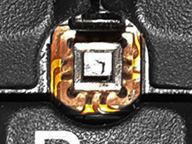
TrackPoint II first appeared in 1992 on the ThinkPad 700[%LaptopMag700%] and last appeared on laptops in May 1995 with the ThinkPad 370C[1]. As such, all laptops that used TrackPoint II were 486-era machines. TrackPoint II was employed on the IBM Model M4-1 (introduced 1993), Model M13 and 5576-C01 keyboards (both introduced in 1994). Later being manufactured by Unicomp, the Model M4-1 (now called the Mighty Mouse) was the last device to use TrackPoint II when it was retired in the late 2000s. The TrackPoint II stick is the base strain gauge pointing stick that TrackPoint III and IV improve upon. Due to especially lacking the negative inertia feature, TrackPoint II performs rather sluggishly with modern resolutions but was very impactful during its heyday and cemented the TrackPoint as a cursor input device still relevant today.
TrackPoint III
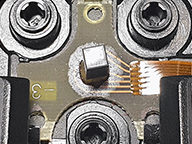
TrackPoint III first appeared in October 1994 on the ThinkPad 755CD. It was comparatively used for a smaller period of time than TrackPoints II and IV, but its negative inertia transfer function gave the technology a newfound speed boost that helped the technology remain competitive far into the future[1]. No discrete keyboards employed TrackPoint III.
TrackPoint IV
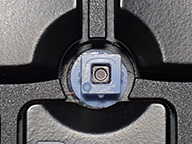
TrackPoint IV first appeared in October 1997 on the ThinkPad 770. The current ThinkPads being sold by Lenovo continue to use this iteration of the technology[%US6115030A%]. The chief improvements for this iteration are a virtual Z-axis that allows for a 'press-to-select' feature and is now typically paired with a third mouse button whereas TrackPoint II and III were exclusively paired with just two mouse buttons. In more recent years, Lenovo has minified the technology and now make low-profile and super-low profile versions of TrackPoint, but they continue to operate on the same principles as TrackPoint IV[1]. Lenovo has also since removed the press-to-select feature[%RedditNoPressToSelect%]. Several keyboards have been made by IBM and Lenovo that employ a TrackPoint IV stick, including models RT3200, KPD8923, KPH0035, SK-8855, KU/KT-1255 and KC-1957.
TrackPoint "I"
The TrackPoint name first appeared on a unique trackball peripheral for the IBM Personal System/2 L40SX portable computer. The TrackPoint was a double-sided device that on one side, you could use as a traditional mouse, but on the other side, you could use it as a trackball[2].
Optical TrackPoint
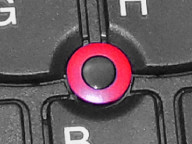
The Optical TrackPoint was an optical input device used exclusively on the Lenovo ThinkPad Tablet Keyboard Folio Case and ThinkPad Tablet 2 Bluetooth Keyboard (EBK-209A). Also referred to as the Optical Finger Mouse[%acc100039%], the Optical TrackPoint is a stationary pointing device in the usual position like TrackPoints II through IV, but, it comprises of an optical sensor mounting on top of a red circle. Both keyboards are known for being very thin and were developed before the advent of low-profile and super-low profile TrackPoint IV, so these two factors likely precluded the possibility of using a typical TrackPoint on these keyboards. Using an Optical TrackPoint is much like trying to swipe the bottom of an optical mouse to move a cursor.
- ThinkWiki - ThinkPad History [accessed 2023-05-14].
- IBM - The IBM PS/2 Model L40 SX System and Features (#191-030) [accessed 2025-02-18].
